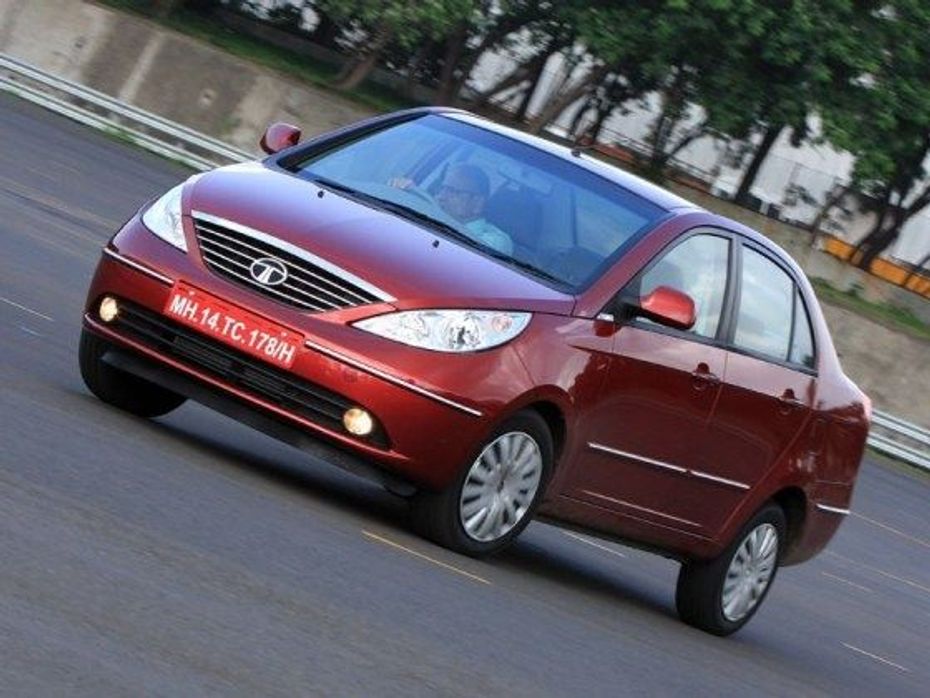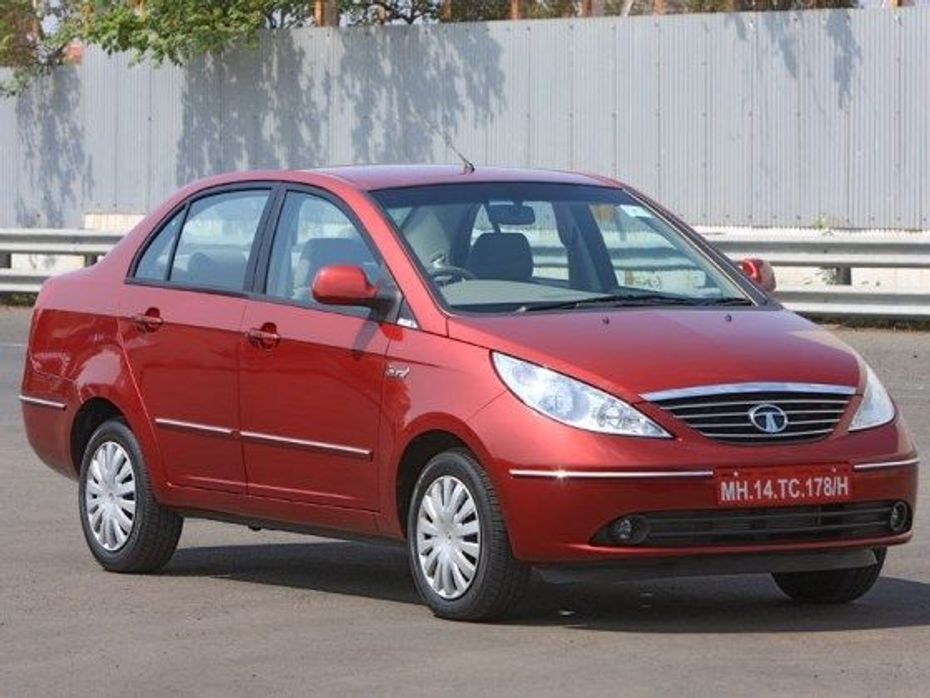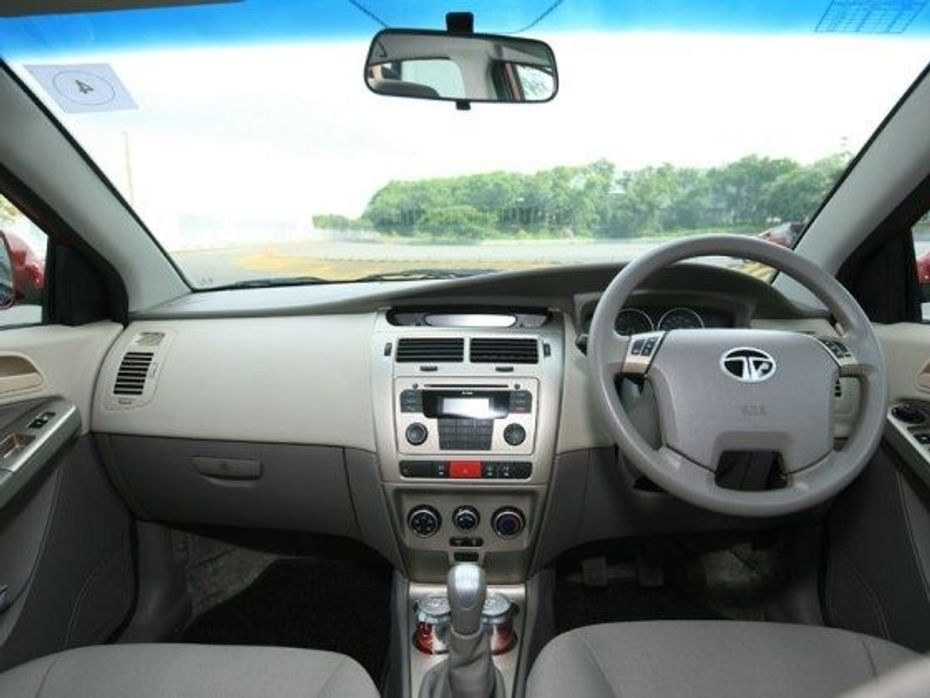
2024 Maruti Dzire Review: Playing It Safe
- Nov 12, 2024
- Views : 1746


If ever one needs reminding as to how effectively Tata Motors has progressed as a car maker, one only needs to sense, see and experience its newest products. From the time the Indica Vista appeared on our roads, the going seems to have changed completely. The ground-breaking Nano seemed to indicate a whole new paradigm shift for the automotive world but Tata Motors didn't seem eager to step off the throttle pedal. And while a few yet seem to look at the Indian firm somewhat disparagingly, it is this determined drive which is so very indicative of an automobile firm eager to stand up and be counted in its peer group.
The latest Indigo Manza sedan is yet more proof of the above. And lest someone suggest that it is but an Indica Vista with a boot, it would be doing India's largest indigenous car maker and its latest product a huge disservice. The Indigo Manza is an all new sedan which like its Indo-Italian stablemate - the Fiat Linea, oozes grace and elegance and doesn't look at all as if the boot has been grafted on in a tacky manner.
If anything, the Indigo Manza (Manza supposedly means a little steer or a beautiful girl, chose what you want to believe), comes across as probably one of the best looking cars in a segment full of high profile machines strong on style and turnout. The Fiat Linea we have already mentioned but in the C-segment the Manza has also to battle the likes of the Honda City, the Ford Fiesta, the Hyundai Verna, the Chevy Aveo and the Suzuki Swift D?Zire and in the battle for making the best first impression, the Tata product does have its nose ahead.
Design and Style

It isn't hard to realize this when you take in the Manza's profile, the crisp clean lines running front to rear and with proportions of bonnet and boot strikingly elegant, the Indigo Manza is more of a handsome Indian hunk as compared to the chic Latino flair embodied by the Fiat Linea. Both these cars are built on the very same assembly line at Fiat India's modern Ranjangaon facility (the duo share many aggregates and also reside in the same segment), so it isn't hard to see what rubs off on each other. The Indigo Manza's front end has a more pronounced assertion about it with a slightly more detailed grille (than on the Indica Vista) coupled to triple-barreled head lights on either side. The large air intake on the wrap around bumper is separated from the top part by a nifty chrome strip which works brilliantly with the same sort of separator strips on the sides and on the rear bumper as well.
The crisp character streak just below the Manza's belt line seems to hold every thing in lithe tenuous action and the sculpting around the A and C-pillars indicates a fresh characterful approach to the overall package. There is nothing tacky about the rear end of the car and the overall design is harmonious rather than contrived as in the case of many others who have grown into full blown saloons from the large hatchback originals. The Manza's 2520mm wheelbase and its large 15-inch tyres help its stance and turnout. Credit Tata Motors' European Technical Centre then, for the Manza's clean yet pleasing design, making it seem ample yet agile rather than huge and unwieldy, both when stationary and also on the move.
Interiors

However, open the doors and step into the interiors and you can sense that this car continues to pack in the "more car per car" Tata DNA. The cabin space of the Indigo Manza is abundantly huge and spacious while also being well thought out and crafted. The front seats (height adjustable for the driver with added lumbar support) are superbly sculpted and though I would have liked to see a bit more side support, the seats seem to hold a person well without tiring him out even after hours behind the wheel. Move on over to the rear seats and you have optimum rear seat comfort for a car in its class with abundant head, elbow and leg room. The ergonomics are perfect and the ease of ingress and egress at the rear will win many plaudits. The seat back angle and the H-points are areas where a great deal of thought has gone in to provide great occupant comfort.
The Manza's interior is simplistically done in a duo-tone shade of plastics and fabric, and for sure has the best cabin treatment of any Tata Motors' product but the door latches are low rent in their turnout, the one jarring detail in a tastefully configured interior. The one major improvement over the Indica Vista, and a logical one at that is the instrument binnacle now being relocated at the straight ahead position in direct view of the driver's vision and not housed in the top central console on the dashboard. The chunky four-spoke steering wheel has large horn pad and features audio controls on the top horizontal spokes. Switchgear is pretty contemporary and fantastic to feel and activate. More so the air con controls which are now electronic switches for the servo motors to actuate the flaps and not cable controlled as in earlier Tata cars. A 2-DIN music system is standard fitment even on the base Manza Aqua and overall the car comes well equipped to begin with while the top end versions (Aura, Aura (ABS) and Aura+) definitely a rung above every other car in the segment with their list of standard features.
Engine and powertrain

the automobile community
While the turnout and the cabin treatment and ambiance might move many subconsciously, the get up and go department hasn't been found wanting. Tata Motors is known for its diesel acumen and it is no different here as well. The Indigo Manza gets the next power-up treatment for the famed 1.3-litre 16-valve DOHC four-cylinder Quadrajet motor which is now rated at 90 PS of power at 4000rpm and with 200Nm of torque at its disposal in the rev band from 1750 to 3000rpm. The variable geometry turbocharger has a tendency to spool up pretty quickly and help propel this 1200kg sedan to very respectable speeds from rest in a clean unflustered manner. In fact the responsiveness of the Manza's motor is distinctly superior to what the similarly-engined Fiat Linea is capable of. A zero to 100km/h time of 17.58 seconds is respectable as is the 163km/h top speed for this car which employs a 5-speed manual gearbox but what is truly impressive is to factor in the overall performance with fuel efficiency in view. A 13.5kmpl overall fuel efficiency in our first test indicates that the new Indigo Manza could be one hell of a performer to watch out in the C-segment.
This isn't to infer that Tata Motors has given up on petrol engines. Far from it, because the Indigo Manza now comes with a 90PS Safire engine having a swept volume of 1.4-litres. This unit hasn't just got a hike in cubic capacity but comes with a couple of new technical features which include a continuous variable cam phaser which works with the new intelligent port resizing feature to help improve driveability and boost the resultant fuel efficiency. The petrol engine is peppy and responsive on its own and the five cogs are well suited to make the best of this revvy motor which develops 116Nm of torque.
Ride quality and handling

Power, torque, driveability and fuel efficiency are nothing if they are not matched by good dynamic ability and here as well the Indigo Manza makes the smiles stay plastered on the driver's face. It is no rabble rouser or a sports car but is a rapid all round family car with good ride quality backed up with easy neutral manners and good road holding and precise well weighted steering. Of course when on full song, the 200Nm of torque being fed through the two front wheels shod with 185/60 R15 tubeless radials is a tad too much and while the car yet handles brilliantly - credit this to optimum wheelbase to track ratio and also the weight distribution, I am sure that the car on 195/55 R15 tyres would have been even better while going on to 205s would have been the best. The Indigo Manza has phenomenal body control and even though its does tend to roll when hurled into corners at speed, the occupants do stay unruffled for the most part.
The steering is brilliant but we would have liked it to be a tad quicker. However as a plush upmarket saloon, the steering is eminently liveable but what is truly awesome is the poise of the car under braking. The Manza always gripped and came to a halt in a straight line whenever the anchors were thrown at speed and this is a mighty confidence-inspiring aspect of the overall drive experience. For the first time on a Tata Motors product for the domestic market, we find air bags and ABS as standard fitment on the Manza, two very welcome details which would be appreciated by many.
So how does the Manza stack up after our indepth exploratory drive? Pretty impressive is what comes quickly to mind and that she sure is. This is the best sedan ever made by Tata Motors and the fit and finish is most unlike cars from this firm. However I must add a rider to this and that in this regard there is scope for even more improvement. Pricing will play a major role in the appeal of the Manza but given the price point where the Fiat Linea resides, it can clearly be understood where the Manza would be positioned. Seems the Fiestas, Vernas, D'zires and the rest have a worthy rival to contend with.

2024 Maruti Dzire Review: Playing It Safe

Tata Tiago iCNG AMT: Balancing Convenience and Cost

Tata Tigor EV vs i-CNG: Which Is Frugal Yet Fun?
 Maruti Dzire
Maruti Dzire
 Tata Tiago
Tata Tiago
 Hyundai Aura
Hyundai Aura
 Tata Tigor
Tata Tigor
 Maruti Swift Dzire Tour
Maruti Swift Dzire Tour
India's largest automotive community
 Auto Expo 2025: Toyota Hilux Black Edition Explained In 10 Images
Auto Expo 2025: Toyota Hilux Black Edition Explained In 10 Images
 India’s Most Affordable Car, The Vayve Eva Is Priced From Rs 3.25 Lakh! Here Is A Look At All Of Its Variants!
India’s Most Affordable Car, The Vayve Eva Is Priced From Rs 3.25 Lakh! Here Is A Look At All Of Its Variants!
 As The Kia Syros Reaches Dealerships Check Out The Pros And Cons Before You Get One Home
As The Kia Syros Reaches Dealerships Check Out The Pros And Cons Before You Get One Home
 No More Diesel-iMT Powertrain In India, As Kia Discontinues It For The Sonet, Seltos And Carens
No More Diesel-iMT Powertrain In India, As Kia Discontinues It For The Sonet, Seltos And Carens
 Tata Punch
Rs. 5.99 Lakh
Tata Punch
Rs. 5.99 Lakh
 Tata Nexon
Rs. 7.99 Lakh
Tata Nexon
Rs. 7.99 Lakh
 Tata Curvv
Rs. 9.99 Lakh
Tata Curvv
Rs. 9.99 Lakh
 Tata Harrier
Rs. 14.99 Lakh
Tata Harrier
Rs. 14.99 Lakh
 Tata Tiago
Rs. 4.99 Lakh
Tata Tiago
Rs. 4.99 Lakh
 Maruti Dzire
Rs. 6.79 Lakh
Maruti Dzire
Rs. 6.79 Lakh
 Hyundai Verna
Rs. 11.07 Lakh
Hyundai Verna
Rs. 11.07 Lakh
 Toyota Camry
Rs. 48.00 Lakh
Toyota Camry
Rs. 48.00 Lakh
 Honda Amaze
Rs. 7.99 Lakh
Honda Amaze
Rs. 7.99 Lakh
 Hyundai Aura
Rs. 6.54 Lakh
Hyundai Aura
Rs. 6.54 Lakh